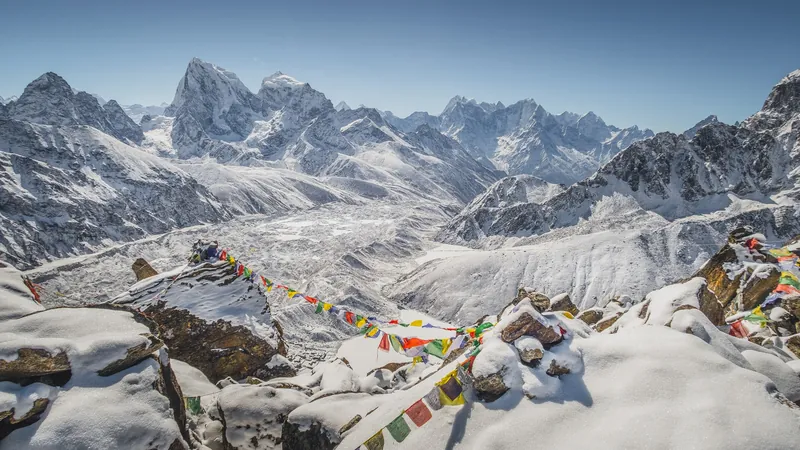
Shocking Discovery Unravels a Century-Old Theory About the Himalayas!
2025-08-30
Author: Lok
Scientists Challenge a Century of Beliefs About Mountain Formation!
In a groundbreaking revelation that could revolutionize our understanding of the Himalayas, researchers have shattered a 100-year-old theory about the geological forces supporting the highest mountain range on Earth. This new insight raises fascinating questions about the formation of one of nature's most awe-inspiring creations.
A Collision of Continents: The Birth of the Himalayas
Around 50 million years ago, a titanic clash of tectonic plates transformed the landscape of Asia. The Indian continent collided with the Eurasian landmass, causing immense pressure that crumpled the region and dramatically shrank Tibet by nearly 620 miles! The Indian plate slipped beneath the Eurasian plate, thickening the crust and launching the Himalayas skyward.
The Old Theory: A Misleading Foundation?
For decades, the dominant theory—proposed by the Swiss geologist Émile Argand in the 1920s—suggested that the weight of the Himalayas rested solely on a double layer of crust, whose depth could reach 50 miles. However, emerging evidence has cast serious doubt on this notion, suggesting that the extreme temperatures 25 miles deep cause these rocks to turn molten, creating a sort of 'yogurt' layer underneath.
The Mantle Mystery: What's Really Supporting the Himalayas?
Recent studies led by Pietro Sternai have introduced a game-changing element: a dense piece of mantle sandwiched between the Indian and Asian crusts! This unexpected finding suggests that the mantle's density preserves the mountains’ elevation and strength, challenging the longstanding assumptions held by geologists.
New Insights from Advanced Simulations
Using advanced computer simulations to model the tectonic collision, researchers discovered that as the Indian plate descends, mantle material rises to form a rigid layer that bolsters the structure beneath the towering Himalayas. This layering provides both buoyancy and the strength necessary to hold the mountains aloft.
The Controversial Shift: Reaction from Experts
While the study presents compelling evidence, it contradicts a widely accepted theory that has dominated geological discussions for over a century. Experts are divided; some see the findings as 'elegant and necessary,' while others caution about the implications of challenging established knowledge.
Conclusion: A Paradigm Shift in Geology?
As more data aligns with this new mantle theory, the scientific community may need to rethink its long-held beliefs about the Himalayas. With the unique geological structure now more understood, this could change not only our view of mountain formation but enhance our broader knowledge of Earth's intricate systems.

 Brasil (PT)
Brasil (PT)
 Canada (EN)
Canada (EN)
 Chile (ES)
Chile (ES)
 Česko (CS)
Česko (CS)
 대한민국 (KO)
대한민국 (KO)
 España (ES)
España (ES)
 France (FR)
France (FR)
 Hong Kong (EN)
Hong Kong (EN)
 Italia (IT)
Italia (IT)
 日本 (JA)
日本 (JA)
 Magyarország (HU)
Magyarország (HU)
 Norge (NO)
Norge (NO)
 Polska (PL)
Polska (PL)
 Schweiz (DE)
Schweiz (DE)
 Singapore (EN)
Singapore (EN)
 Sverige (SV)
Sverige (SV)
 Suomi (FI)
Suomi (FI)
 Türkiye (TR)
Türkiye (TR)
 الإمارات العربية المتحدة (AR)
الإمارات العربية المتحدة (AR)